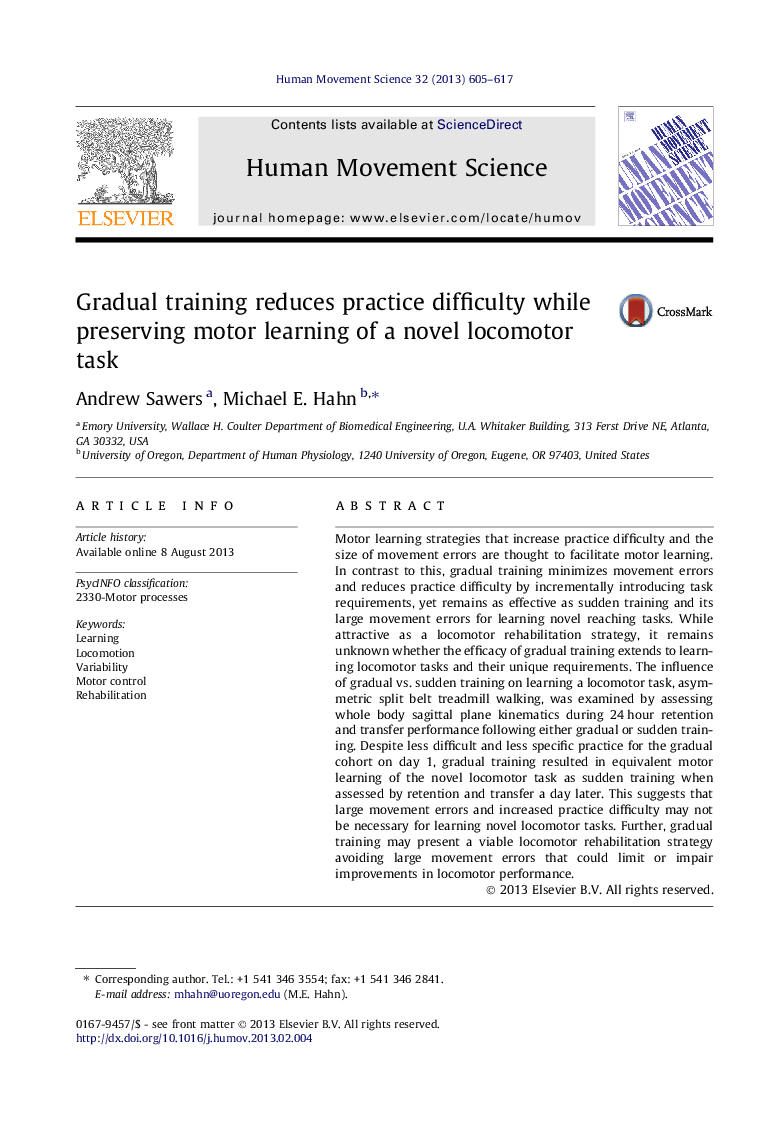| Article ID | Journal | Published Year | Pages | File Type |
|---|---|---|---|---|
| 10459191 | Human Movement Science | 2013 | 13 Pages |
Abstract
Motor learning strategies that increase practice difficulty and the size of movement errors are thought to facilitate motor learning. In contrast to this, gradual training minimizes movement errors and reduces practice difficulty by incrementally introducing task requirements, yet remains as effective as sudden training and its large movement errors for learning novel reaching tasks. While attractive as a locomotor rehabilitation strategy, it remains unknown whether the efficacy of gradual training extends to learning locomotor tasks and their unique requirements. The influence of gradual vs. sudden training on learning a locomotor task, asymmetric split belt treadmill walking, was examined by assessing whole body sagittal plane kinematics during 24Â hour retention and transfer performance following either gradual or sudden training. Despite less difficult and less specific practice for the gradual cohort on day 1, gradual training resulted in equivalent motor learning of the novel locomotor task as sudden training when assessed by retention and transfer a day later. This suggests that large movement errors and increased practice difficulty may not be necessary for learning novel locomotor tasks. Further, gradual training may present a viable locomotor rehabilitation strategy avoiding large movement errors that could limit or impair improvements in locomotor performance.
Related Topics
Life Sciences
Neuroscience
Cognitive Neuroscience
Authors
Andrew Sawers, Michael E. Hahn,
